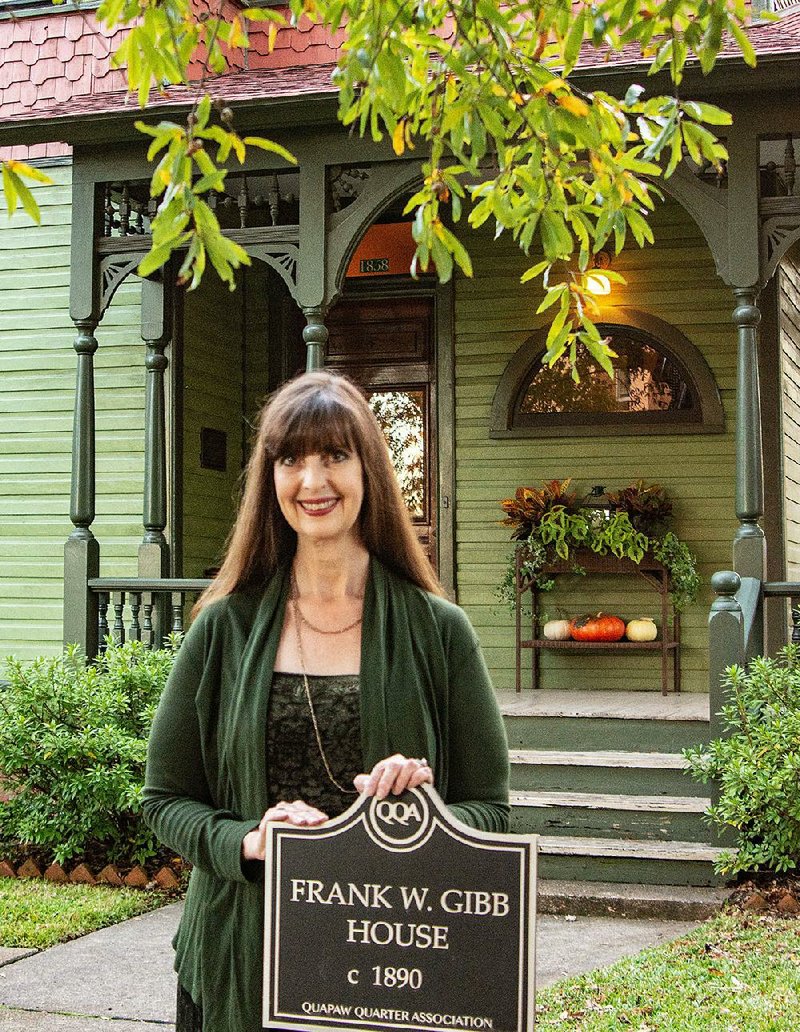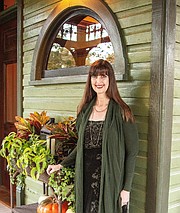Every spring a few residents of the Quapaw Quarter -- a historic district in downtown Little Rock around MacArthur Park and the Governor's Mansion that includes the city's oldest neighborhoods -- open their lovingly restored homes for the public to enjoy. Laura Sergeant remembers watching a tour in about 1988 from her studio apartment window in an old house in the district and thinking "What a magical event."
Sergeant had just moved to Little Rock the previous fall to work as a kindergarten teacher in the Pulaski County Special School District.
"I just fell in love with the neighborhood." She says it reminded her of living in Crossett where she lived until the age of 12, with people walking on sidewalks, close neighbors and being downtown.
The following spring, she was asked to be a guide for the tour sponsored by the Quapaw Quarter Association (QQA). The nonprofit's mission is to preserve greater Little Rock's historic places. Sergeant has been volunteering for QQA in one capacity or another ever since.
"I've really really enjoyed it. I learned so much about preservation, conservation and advocacy. I've met so many wonderful people and had the opportunity to be in so many beautiful houses. It's just a win-win situation for me."
Laura and her husband, Ed, an architect, now live in and are restoring the Frank W. Gibb house built around 1890. The couple actually met on one of the QQA's spring tours. He had moved to Little Rock for a job and was living in their current house. At the time the house was divided into two apartments, Sergeant says.
A neighbor set the couple up.
"Our neighbor, the one that used to live next-door, kept wanting me to meet him and I was telling her no. She was a tour guide down the street and asked us to both to be tour guides -- but we didn't know that -- and put us in adjoining rooms. So the rest is history."
The couple married and two years later bought the Gibb house and started to return it into a single family home. They've taken out a wall that separated the two floors into apartments, rerouted the duct work and raised the ceiling and took out the upstairs kitchen. They've also returned the outside of the house to an original color scheme.
"We've done a lot of paint history and paint research. We had the lovely opportunity to work with Becky and Charles Witsell. They've been such great friends and she helped us determine the original color scheme by doing a spectral analysis."
Sergeant explains they took a core sampling of the paint. "You take a little bit in an upper corner, where it hasn't been scraped as well over time. When it came back, Becky was breathy and I was like 'Oh, my goodness. What in the world?' I thought it made it look like The Munsters' [house] at first," she says about the green and rusty orange color-scheme.
"Once we got a whole side painted, I thought it is pretty and it does make sense. It kind of relates to the ferns on the ground and the trees. But it was quite shocking at first. The house had been painted a dovey gray -- all over -- the shingles and everything, so there wasn't any variation in color. Basically, it was a very large gray rectangle. When we started adding color to the different pieces all of a sudden you started to notice all the intricate design in the shingle and the texture in the trim."
The couple also re-roofed the house last year after some hail damage and restored the cresting, a decorative copper metal ornamentation on the ridge of the roof. Another project they've completed was restoring the porch to match the Queen Anne style of the home.
At one time the home had been remodeled with a Colonial Revival type porch. The Witsell Firm had done some exploration, Sergeant says, and found the footprint of the original porch and shared some drawings with them of what it might have looked like.
When a historic house was being torn down on Cantrell Road, Sergeant says she noticed the porch looked much like the Witsell drawing and they were able to buy the porch pieces. After replicating some missing pieces they had the porch put on their home. "It's like it's always been there with the spindles and the arches. It needed to stay in Little Rock. It kind of came back home."
The longtime QQA volunteer is finishing an eight-year stint as a board member and, at the annual membership meeting on Nov. 14, she was awarded the Tom Wilkes Award for outstanding service on the board of directors.
"Laura has served in several capacities in support of the QQA," says Patricia Blick, executive director of the QQA. "She has chaired the spring tour of homes, winter fundraisers, she spearheaded the summer supper series, has served as board president and also as vice president of the Advocacy Committee."
And although this is her last year as a board member, she will still volunteer and be on a committee. "You just make time for things that are important to you and this is really important to me and I've just had a wonderful time doing it."
Sergeant says one of the things she is most proud of as a member of the association is that the QQA bought the Woodruff house. The house in downtown Little Rock was built in 1853 for the founder of the Arkansas Gazette, William E. Woodruff.
"That to me was what we should do and what we did. It's stabilized and a new roof was put on so it's dry and secured." There is a committee, she says, that is looking at what will be done with the house. "At some point it needs to go into good hands and that's the goal. We want somebody in it and protecting it. It will be the happiest when it has people in it."
High Profile on 11/25/2018

